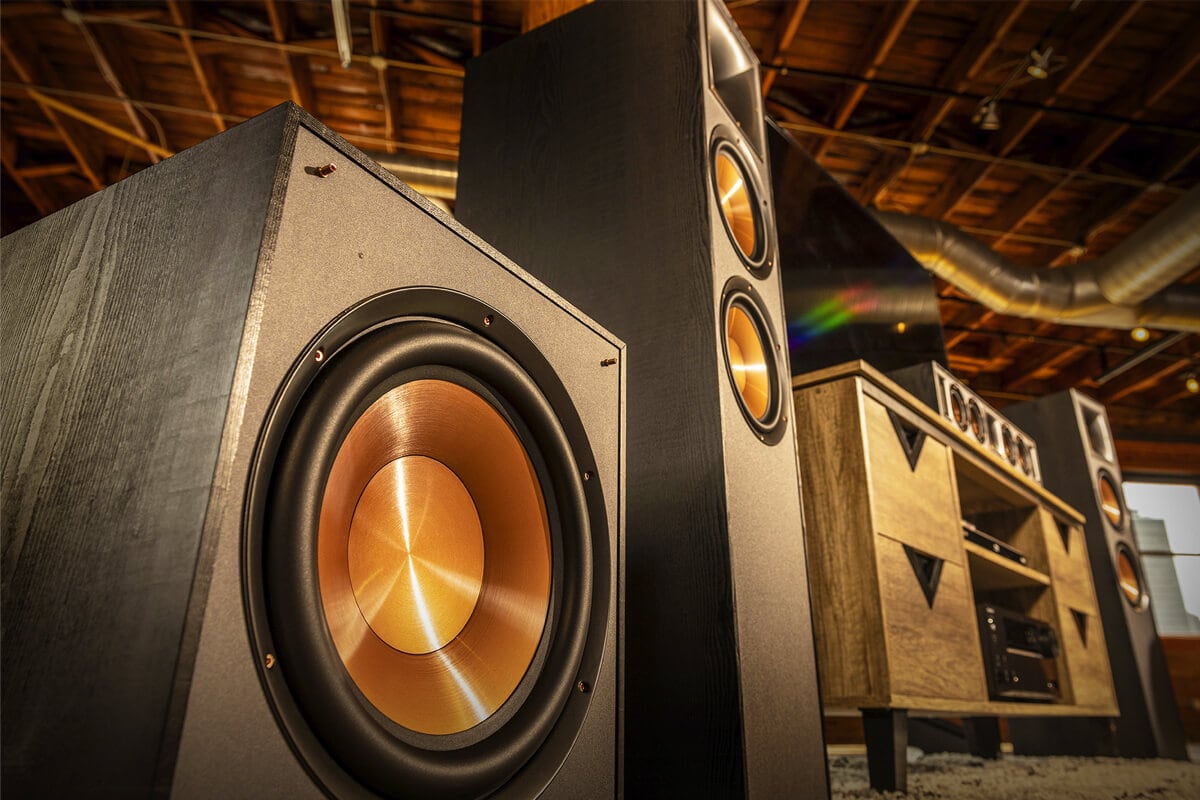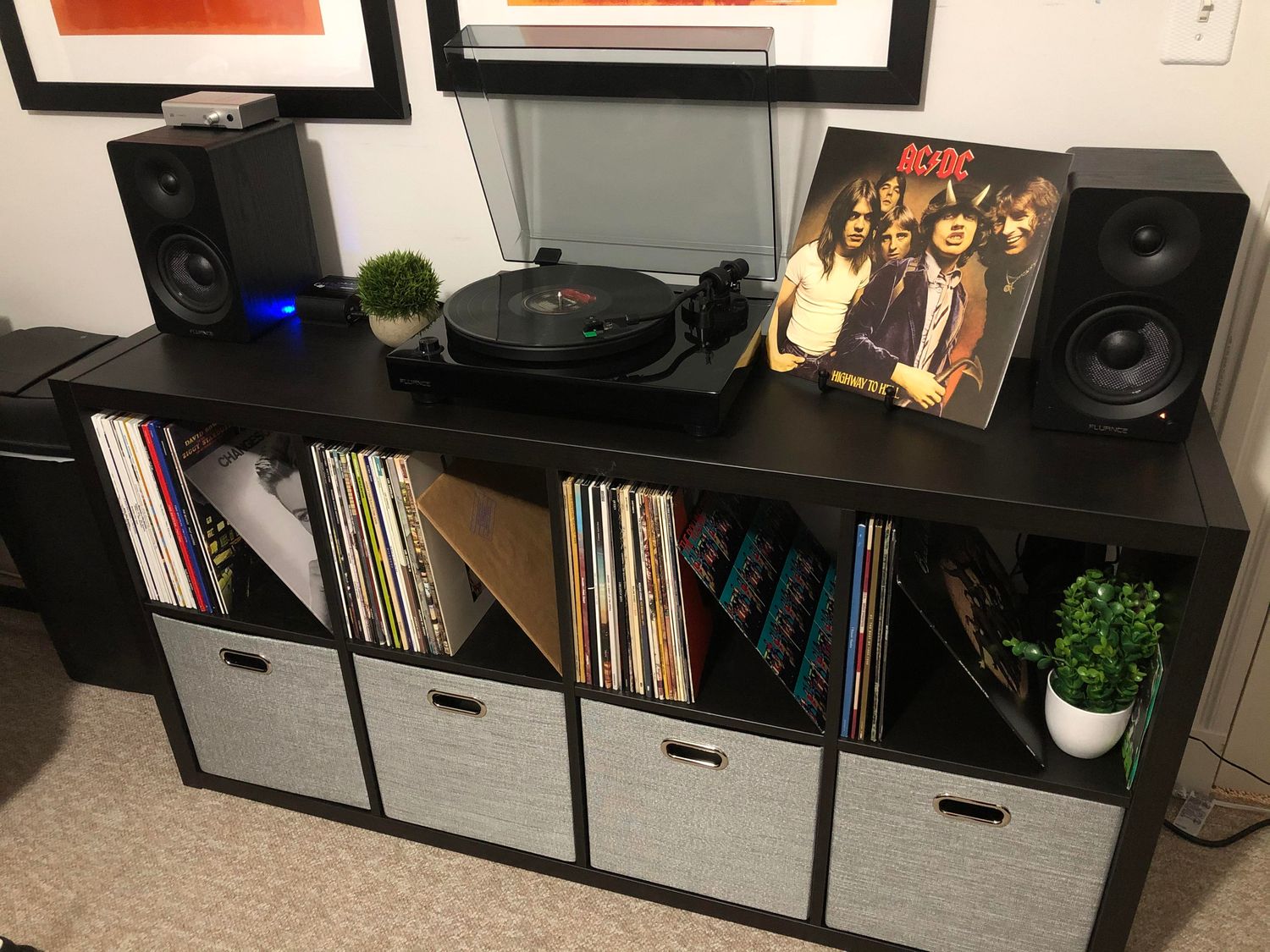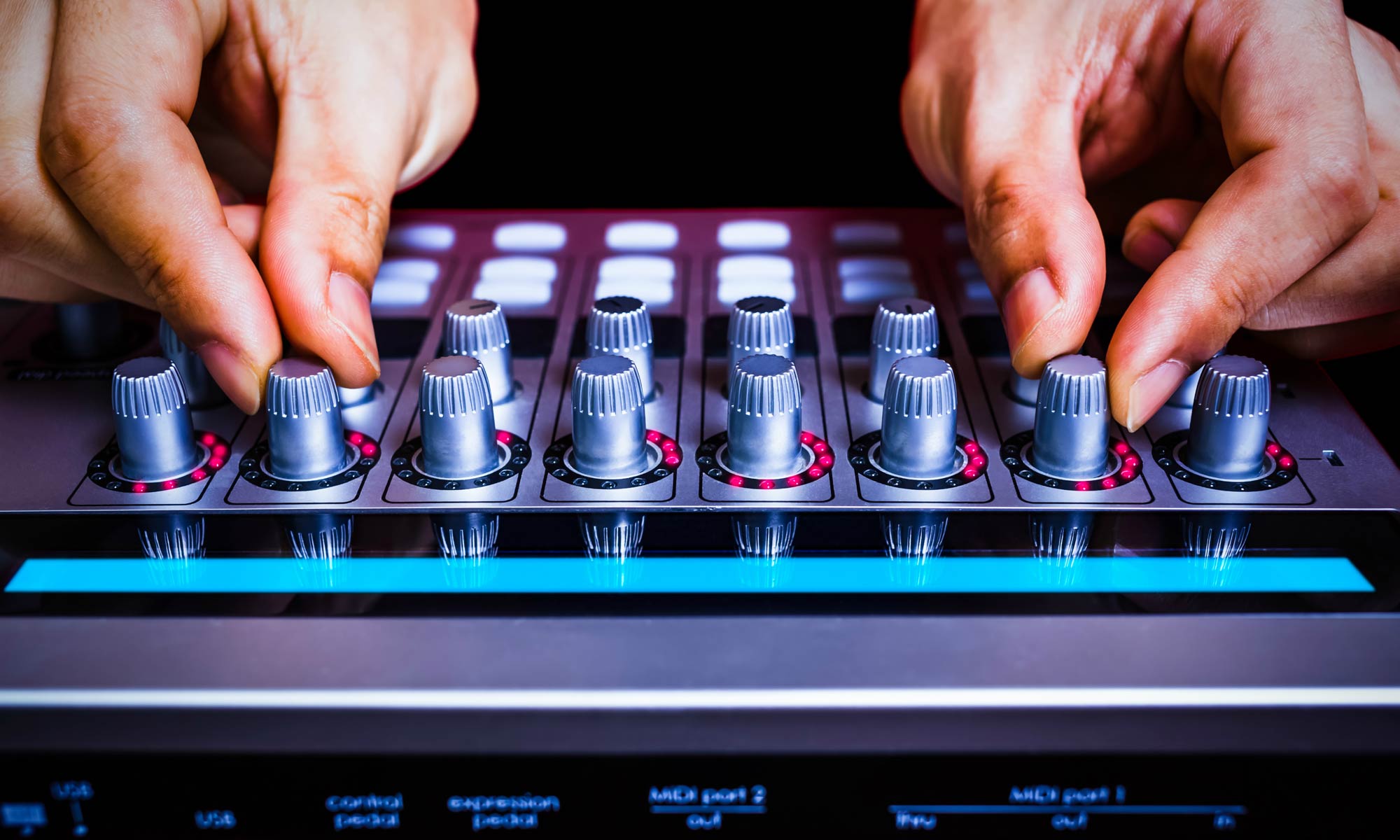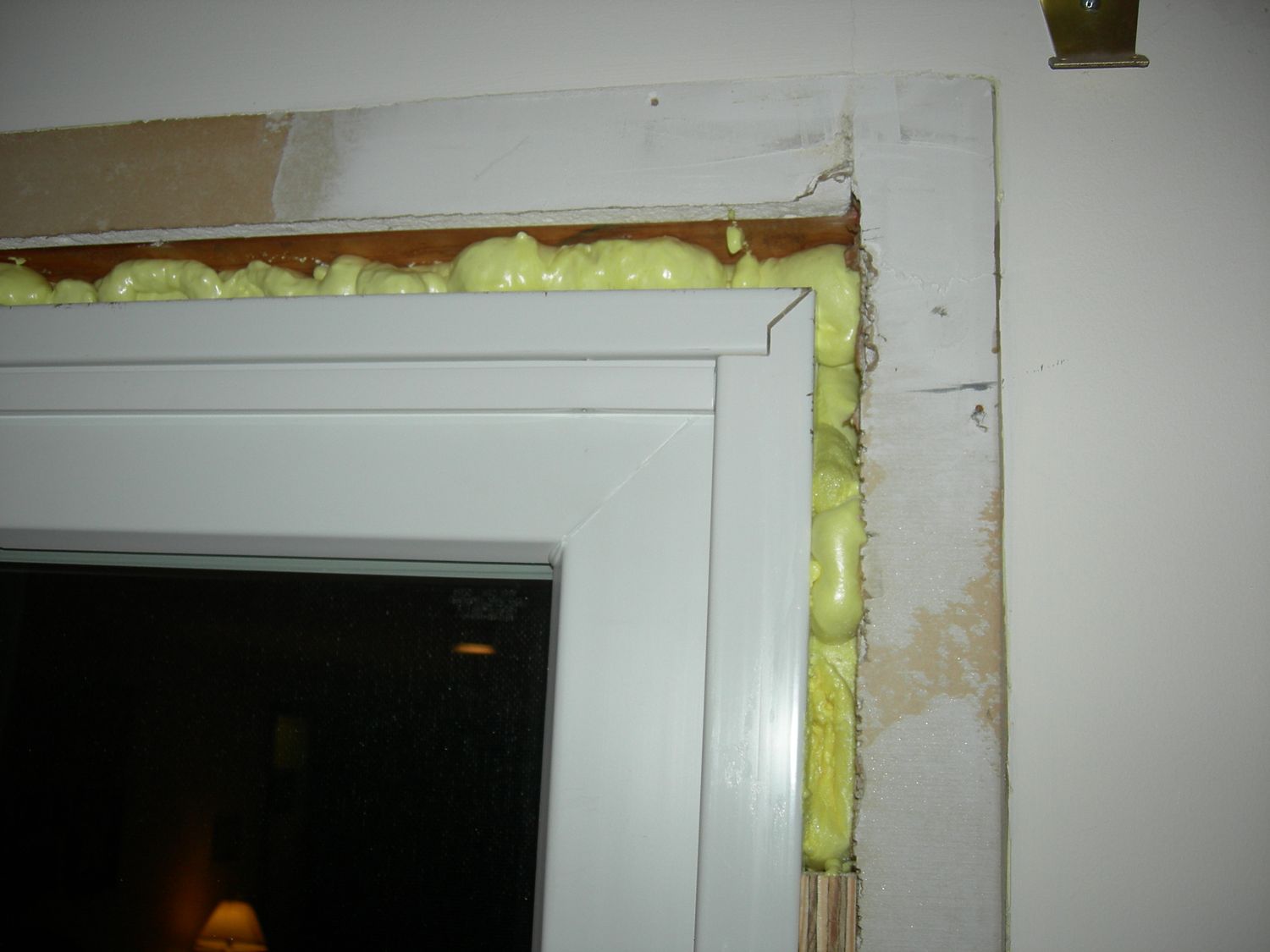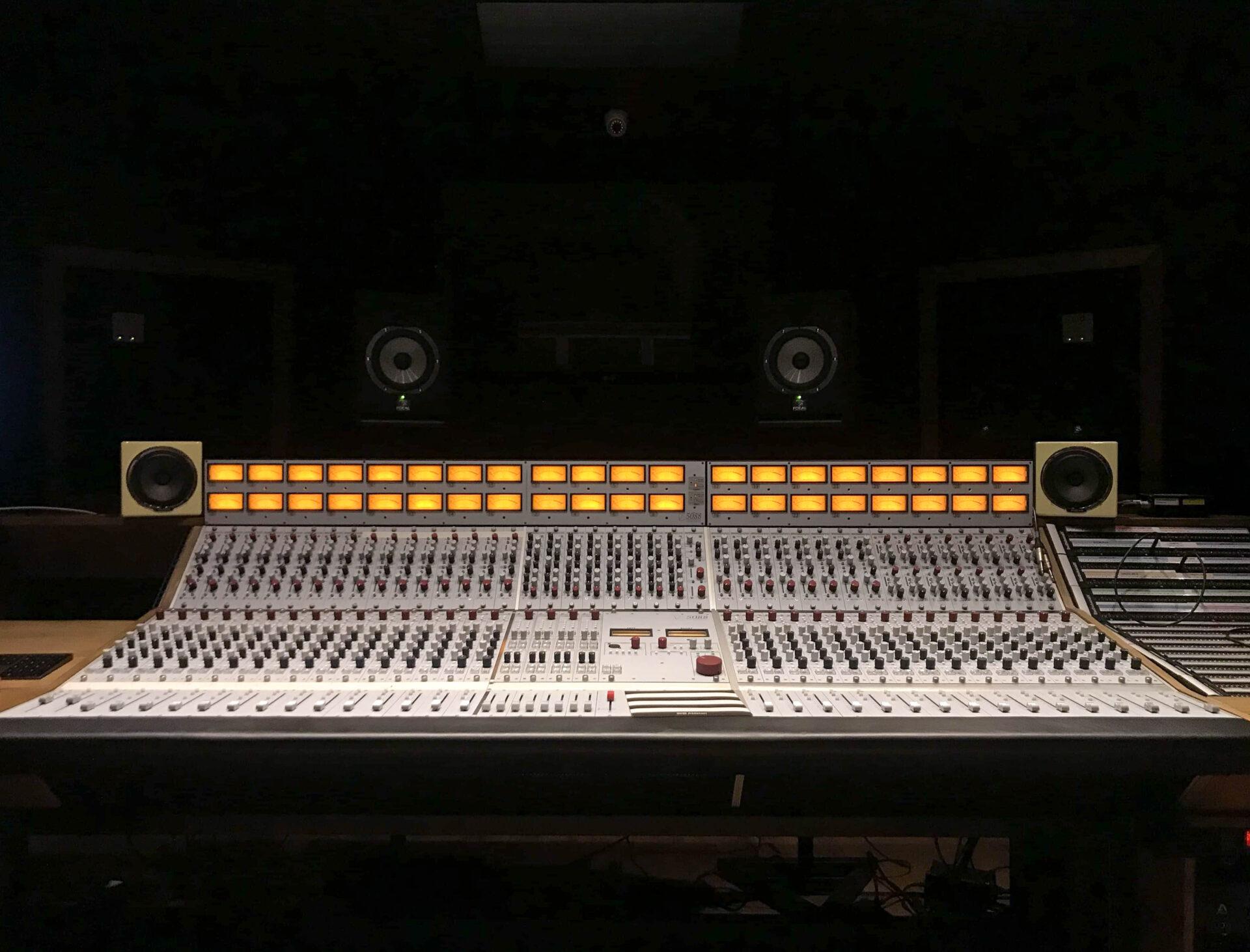Home>Production & Technology>Soundproofing>How Much Soundproofing Do I Need For Streaming


Soundproofing
How Much Soundproofing Do I Need For Streaming
Modified: February 18, 2024
Discover how much soundproofing you need for seamless streaming. Enhance the quality of your audio with effective soundproofing solutions.
(Many of the links in this article redirect to a specific reviewed product. Your purchase of these products through affiliate links helps to generate commission for AudioLover.com, at no extra cost. Learn more)
Table of Contents
Introduction
When it comes to streaming, sound quality is vital. Whether you’re a gamer, musician, or content creator, you want your audience to have the best audio experience possible. But what happens when you have a noisy environment that interferes with your recordings or live streams? This is where soundproofing becomes essential.
Soundproofing is the process of reducing or eliminating unwanted noise that can affect the quality of your audio. It involves creating barriers and using materials that absorb, diffuse, or isolate sound waves. By implementing effective soundproofing techniques, you can minimize external noise and create a more controlled and professional streaming environment.
In this article, we will explore the various factors to consider when soundproofing for streaming. We will delve into the different types of soundproofing materials available and discuss how to determine the level of soundproofing you need. Additionally, we will touch on budget considerations to help you make informed decisions.
Whether you are setting up a dedicated streaming room or looking to improve your current setup, understanding soundproofing for streaming is crucial for achieving optimal audio quality and providing an immersive experience for your viewers.
Understanding Soundproofing for Streaming
Before diving into the specifics of soundproofing for streaming, it’s essential to have a basic understanding of how soundproofing works. Sound travels in waves, and when it encounters obstacles, it can be reflected, absorbed, or transmitted through them. Soundproofing aims to minimize the transmission of sound waves, reducing the impact of external noise on your streaming setup.
There are three primary methods employed in soundproofing:
- Absorption: This involves using materials that absorb sound waves, preventing them from bouncing off surfaces and creating echoes or reverberation. Absorption materials, such as foam panels, acoustic panels, and acoustic ceiling tiles, are commonly used in streaming spaces to reduce echoing and improve sound quality.
- Diffusion: Diffusion materials scatter sound waves, preventing them from reflecting directly back towards the microphone. Diffusers, often in the form of acoustic panels with irregular surfaces, help break up sound waves and create a more even sound distribution in the room.
- Isolation: Isolation involves creating a physical barrier to block out external noise. This can be achieved by using soundproofing materials such as mass-loaded vinyl, soundproof curtains, or adding additional layers to walls and doors. Isolation is particularly important when dealing with low-frequency sounds or loud external noise sources.
Each of these methods plays a role in soundproofing your streaming space and can be used individually or in combination, depending on your specific needs and the characteristics of your environment.
When considering soundproofing for streaming, it’s crucial to assess the unique characteristics of your streaming room. Factors such as room size, layout, and the type of noise sources present will impact your soundproofing approach. By understanding these factors, you can develop an effective soundproofing strategy to optimize audio quality during your streams.
In the following sections, we will explore each of these factors in greater detail, providing tips and insights to help you achieve optimal soundproofing for your streaming endeavors.
Factors to Consider
When it comes to soundproofing for streaming, there are several key factors to consider. By examining these factors, you can make informed decisions and choose the most appropriate soundproofing techniques for your setup. Let’s take a closer look at these factors:
- Room size and layout: The size and layout of your streaming room play a significant role in soundproofing. Larger rooms generally have more echoing and reverberation issues, while smaller rooms may have more noise transmission from external sources. Assessing the dimensions and layout of your space will help determine the amount and placement of soundproofing materials needed.
- Noise source and levels: Identify the primary sources of noise in and around your streaming space. Is it traffic noise, neighbors, HVAC systems, or something else? Understanding the noise sources and their levels will help you target your soundproofing efforts effectively. For example, if you’re dealing with external noise, focusing on isolation methods might be more beneficial.
- Usage patterns: Consider how you plan to use your streaming space. Will you be primarily recording voiceovers, live streaming gaming sessions, or playing instruments? Different usage patterns may require specific soundproofing treatments. For example, if you play drums, you’ll need to invest in additional soundproofing measures to control the noise generated.
- Budget: Soundproofing can range from simple, cost-effective solutions to more complex and expensive options. Determine your budget for soundproofing and prioritize the areas that will have the most significant impact on your audio quality. It’s important to strike a balance between your budget constraints and your desired level of soundproofing.
- Aesthetics: Consider the visual appeal of your streaming space. While soundproofing is crucial for audio quality, you also want your streaming room to look professional and visually appealing. Explore soundproofing materials and solutions that align with your aesthetic preferences.
By taking these factors into account, you can develop a soundproofing plan tailored to your specific needs and create an ideal streaming environment with improved audio quality and minimal external noise interference. In the next sections, we will discuss different types of soundproofing materials and techniques that can be utilized to achieve this.
Room Size and Layout
The size and layout of your streaming room have a significant impact on the effectiveness of soundproofing measures. Understanding how these factors influence sound transmission and reverberation can help you make informed decisions when implementing soundproofing techniques.
When it comes to room size, larger spaces tend to have more echoing and reverberation issues. This is because sound waves have more room to bounce off surfaces, resulting in a longer decay time and potential interference with your audio recordings or live streams. To address this, consider incorporating absorption materials into your streaming room. Acoustic panels, foam panels, and even heavy curtains can help absorb and minimize the bouncing of sound waves, reducing echoes and reverberation.
On the other hand, smaller rooms may face challenges with noise transmission from external sources. If you’re frequently dealing with traffic noise or loud neighbors, it’s important to focus on isolation techniques. Installing mass-loaded vinyl or soundproof curtains on windows and doors, sealing any gaps or cracks, and adding extra layers to the walls can help block out external noise and create a quieter streaming environment.
In addition to the size of the room, the layout also plays a role in soundproofing. The arrangement of furniture, equipment, and soundproofing materials can impact the distribution of sound waves. Consider placing absorption materials strategically behind or around your microphone to minimize reflections. You can also experiment with diffusers to break up sound waves and create a more even sound distribution throughout the room.
If your streaming setup includes instruments or other noise sources, it’s important to consider the placement within the room as well. Keep instruments away from walls or other reflective surfaces to avoid unwanted echoes and reflections. Proper microphone placement and orientation can also help minimize the pickup of ambient noise and focus on the desired audio sources.
By assessing the size and layout of your streaming room, you can determine the most effective placement of soundproofing materials and optimize the acoustics of your space. This will help provide a more controlled and professional audio environment for your streaming activities.
Noise Source and Levels
Understanding the specific noise sources and their levels is crucial when it comes to soundproofing for streaming. By identifying the primary sources of noise in and around your streaming space, you can take targeted measures to minimize their impact and improve the audio quality of your streams.
Start by identifying the types of noise that are most problematic for you. It could be external noise from traffic, construction, or neighbors, or it could be internal noise from HVAC systems, computers, or fans. By pinpointing these sources, you can prioritize your soundproofing efforts accordingly.
Assess the noise levels associated with each source. Some noise sources may be intermittent and have varying intensities, while others may be constant. Consider using a decibel meter to measure and monitor the noise levels in your streaming space. This will give you a clear understanding of the baseline noise levels and allow you to determine the amount of soundproofing required to achieve an acceptable level for streaming.
For external noise sources, such as traffic or neighbors, isolation techniques are typically the most effective. Install soundproof curtains or blinds on windows to block out noise, and seal any gaps or cracks around windows and doors to reduce sound transmission. Adding mass-loaded vinyl or extra layers to the walls can further enhance sound isolation.
For internal noise sources, such as HVAC systems or computer fans, focus on addressing the specific source of the noise. It may involve replacing or upgrading noisy equipment, adding soundproof enclosures or boxes to isolate the noise, or utilizing vibration isolation pads to dampen the vibrations. Additionally, consider using absorption materials, such as foam panels or acoustic tiles, to reduce the reflections of internal noise within the room.
It’s important to note that different noise frequencies may require different soundproofing treatments. Low-frequency sounds, like rumbling bass or traffic noise, are more challenging to block and may require specialized materials such as low-frequency membrane barriers or bass traps. High-frequency sounds, on the other hand, can be effectively absorbed with acoustic panels or foam tiles.
By understanding the specific noise sources and levels in your streaming space, you can tailor your soundproofing approach to address them effectively. This will result in a quieter and more focused audio environment for your streams, ultimately enhancing the overall listening experience for your audience.
Types of Soundproofing Materials
When it comes to soundproofing for streaming, there is a wide range of materials available to help minimize unwanted noise and improve the audio quality of your streams. Understanding the different types of soundproofing materials will enable you to choose the right ones for your specific needs. Here are three main categories of soundproofing materials:
- Absorption Materials: These materials are designed to absorb and dampen sound waves, reducing echoes, reverberation, and overall noise levels. Common absorption materials include foam panels, acoustic panels, fiberglass insulation, and perforated panels. These materials are typically used on walls, ceilings, or floors to minimize sound reflections and create a more controlled acoustic environment.
- Diffusion Materials: Diffusion materials scatter sound waves, preventing them from reflecting directly back towards the microphone or creating strong resonances. These materials have irregular surfaces or patterns that break up sound waves and produce a more balanced sound distribution. Diffusers are often used in recording studios or streaming spaces to create a natural and even sound environment. They can be in the form of diffuser panels, diffuser panels, or diffuser blocks.
- Isolation Materials: Isolation materials are used to create a physical barrier that blocks the transmission of sound waves from outside the streaming space. Mass-loaded vinyl, soundproof curtains, and acoustic doors are examples of isolation materials that can effectively reduce the impact of external noise sources. Additionally, adding extra layers to walls or employing decoupling techniques, such as resilient channels or sound isolation clips, can further enhance the isolation properties of the room.
It’s important to note that soundproofing materials work together in combination to achieve optimal results. In many cases, a combination of absorption, diffusion, and isolation techniques is the most effective approach to soundproofing. Experimenting with a combination of materials can help fine-tune the acoustics of your streaming space and improve the audio quality of your streams.
When selecting soundproofing materials, consider factors such as their effectiveness, durability, ease of installation, and aesthetic appeal. It’s important to strike a balance between functionality and visual aesthetics, as a visually appealing streaming space can enhance the overall experience for both creators and viewers.
Consulting with soundproofing experts or professionals can provide additional guidance in choosing the right materials for your specific streaming needs. By utilizing the appropriate soundproofing materials, you can create an optimal acoustic environment that enhances the audio quality and immersion of your streaming content.
Absorption Materials
Absorption materials are an integral part of soundproofing for streaming, as they help to reduce echoes, reverberation, and overall noise levels in your streaming space. These materials work by absorbing sound waves, preventing them from bouncing off surfaces and causing unwanted reflections. Here are some commonly used absorption materials:
- Foam Panels: Foam panels, often made from materials like polyurethane or melamine, are popular for their effectiveness in absorbing mid to high-frequency sounds. They are easy to install and come in various sizes, shapes, and colors, allowing for flexibility in design. Foam panels can be affixed to walls, ceilings, or placed strategically around the room to control sound reflections and improve acoustics.
- Acoustic Panels: Acoustic panels are another type of absorption material used in soundproofing. They are made from materials like fiberglass or rockwool, which have excellent sound absorption properties. Acoustic panels are available in different densities and thicknesses, providing a range of absorption capabilities. They are often used in professional studios and streaming spaces to create a controlled sound environment.
- Fiberglass Insulation: Fiberglass insulation is a versatile and cost-effective option for sound absorption. It is commonly used in walls, floors, and ceilings during construction to improve both thermal insulation and soundproofing. Fiberglass insulation comes in batts or rolls and can be installed between walls or in cavities to reduce sound transmission and improve the acoustics of your streaming room.
- Perforated Panels: Perforated panels are sturdy panels that have small holes or slots. These panels are often made from wood or metal and are designed to absorb sound while allowing some sound energy to pass through. Perforated panels are commonly used in larger streaming spaces or studios, especially when a combination of absorption and diffusion is desired.
When using absorption materials, it’s important to consider factors such as the frequency range they effectively absorb, the thickness and density of the material, and the coverage needed in your streaming room. A balance must be struck between the absorption of sound waves and the overall aesthetics of your streaming space.
Experimenting with the placement and combination of various absorption materials can help you achieve the desired sound quality. Avoid over-absorption, as it can lead to a dead or overly damped sound. Striking the right balance will result in a well-controlled and pleasing acoustic environment for your streaming activities.
It’s crucial to note that absorption materials primarily target mid to high-frequency sounds. Low-frequency sounds, such as bass or rumbling noise, may require additional measures, such as bass traps or low-frequency membrane barriers, to achieve effective soundproofing.
By incorporating absorption materials into your streaming space, you can significantly reduce echoes, address reverberation issues, and improve the overall audio quality of your streams. Experimentation and fine-tuning are key to finding the optimal placement and combination of absorption materials for your specific streaming needs.
Diffusion Materials
Diffusion materials play a crucial role in soundproofing for streaming by scattering sound waves and preventing them from reflecting directly back towards the microphone or creating strong resonances. These materials break up sound waves and help create a more balanced sound distribution in your streaming space. Here are some commonly used diffusion materials:
- Diffuser Panels: Diffuser panels are designed with irregular surfaces or patterns to scatter sound waves. They are often made from materials like wood or plastic and come in various shapes and sizes. Diffuser panels are strategically placed on walls or ceilings to break up sound reflections, prevent standing waves, and create a more natural and even sound environment.
- Diffuser Blocks: Diffuser blocks, also known as quadratic residue diffusers, have a specific pattern of varying heights and depths that scatter sound waves in multiple directions. These blocks are commonly used in professional studios and larger streaming spaces to diffuse sound and minimize flutter echoes and resonances. They are often arranged in repeating patterns for optimal scattering results.
- Diffuser Clouds: Diffuser clouds are large diffuser panels suspended from the ceiling, creating a visually appealing and effective diffusion solution. They help break up sound waves and prevent sound reflections from the ceiling, improving the overall sound distribution in the streaming space. Diffuser clouds are commonly used in recording studios and larger streaming rooms to create a more controlled and balanced acoustic environment.
When incorporating diffusion materials, it’s important to consider the size of your streaming room and the specific areas where diffusion is needed. Diffusion materials are particularly effective in spaces with larger dimensions and where reflective surfaces are prominent.
Experiment with the placement and arrangement of diffusion materials to optimize sound scattering. Strategic placement on walls and ceilings around your streaming space can help create a more uniform sound field and reduce the impact of standing waves and acoustic anomalies.
Combining diffusion materials with absorption materials can provide a balanced soundproofing approach. The absorption materials reduce excessive reflections, while the diffusion materials break up sound waves and prevent strong resonances, resulting in a more natural and controlled acoustic environment.
It’s also important to note that different diffuser designs and patterns have different scattering characteristics. Some diffusers are more effective in scattering high-frequency sound waves, while others work better with mid to low-frequency sounds. Consider the specific frequency range you want to target and select diffusion materials accordingly.
By incorporating diffusion materials into your streaming space, you can minimize reflections, prevent standing waves, and create a more balanced sound environment. Experimentation and fine-tuning are key to finding the optimal placement and combination of diffusion materials for your specific streaming needs.
Isolation Materials
Isolation materials are essential when it comes to soundproofing for streaming, as they help create a physical barrier that blocks the transmission of sound waves from outside the streaming space. These materials effectively reduce the impact of external noise sources, ensuring a quieter and more focused audio environment. Here are some commonly used isolation materials:
- Mass-Loaded Vinyl (MLV): Mass-loaded vinyl is a dense, flexible material that effectively blocks sound transmission. It is typically installed on walls, floors, or ceilings to create an additional layer of soundproofing. MLV is known for its excellent performance in reducing low-frequency noise and can be used in combination with other materials for enhanced sound isolation.
- Soundproof Curtains: Soundproof curtains, also known as acoustic or heavy curtains, are made of dense, multiple-layered fabrics that have sound-absorbing properties. These curtains are designed to block out sound and reduce noise transmission through windows and doors. They are especially useful for spaces where temporary soundproofing is desired or in rental environments where permanent modifications are not allowed.
- Acoustic Doors and Windows: Acoustic doors and windows are specifically designed to provide a higher level of sound isolation and reduce noise transmission. These doors and windows feature multiple layers of glass or high-density materials that effectively block out external noise sources. Acoustic doors and windows can be a significant investment but offer substantial benefits in terms of soundproofing.
- Additional Wall Layers: Adding extra layers to existing walls is a common approach to sound isolation. This can be achieved by using materials such as drywall, medium-density fiberboard (MDF), or plywood. The additional layers help to increase the mass and reduce sound transmission through walls. Combining these additional layers with insulation materials can further enhance soundproofing capabilities.
When choosing isolation materials, it’s important to consider the specific noise sources you are trying to block and the level of sound isolation required. Different materials offer varying degrees of soundproofing, and the choice will depend on your budget, the severity of the noise problem, and the desired level of sound reduction.
Keep in mind that soundproofing is not just about blocking external noise; it is also about reducing noise leakage from your streaming space. Ensure that doors, windows, and any gaps or cracks in the walls are properly sealed to prevent sound leaks and maintain a quiet environment.
It’s worth noting that isolation materials, especially those used for blocking external noise, might not completely eliminate all sound transmission. They significantly reduce noise levels but may not entirely eliminate it. Achieving complete soundproofing often involves a combination of isolation, absorption, and diffusion techniques to create the most effective and professional streaming environment.
By incorporating isolation materials into your streaming space, you can minimize the impact of external noise sources and create a quieter and more focused audio environment. Carefully consider your specific needs and budget to select the most appropriate isolation materials for your soundproofing goals.
Calculating the Required Level of Soundproofing
Calculating the required level of soundproofing for your streaming space involves assessing various factors, such as the desired sound reduction, the existing noise levels, and the specific requirements of your streaming activities. While there isn’t an exact formula for determining the precise level of soundproofing needed, the following considerations can help guide your decision-making process:
- Sound Transmission Class (STC): The Sound Transmission Class is a rating system that measures the effectiveness of a material or assembly in blocking sound transmission. It quantifies the ability of a material to attenuate sound and provides a reference point for determining the required level of soundproofing. Higher STC ratings indicate better soundproofing performance, with values ranging from 20 for low sound isolation to over 60 for high levels of sound reduction.
- NC Ratings: The Noise Criteria (NC) rating is another measurement used to evaluate the overall noise levels in a space. It takes into account factors such as background noise, speech clarity, and overall acoustic comfort. By understanding the current NC rating of your streaming space, you can determine the desired reduction in noise levels. For example, if you have an NC rating of 40 and wish to achieve a quieter streaming environment, you might aim to reduce it to around 30 or lower.
- Specific Noise Criteria: Consider the specific noise criteria applicable to your streaming activities. If you’re a musician, you may need to focus on reducing external noise sources and sound leaks to create a controlled recording environment. If you’re a content creator, you may need to target echoes and reverberations to ensure clear and professional audio quality. Evaluate the unique requirements of your streaming activities to determine the level of soundproofing needed.
- Personal Preferences: Consider your personal preferences and the quality of audio experience you want to provide for your audience. While there are industry standards and guidelines, ultimately, the required level of soundproofing will depend on your specific goals and expectations. Assess the criticality of noise reduction and the level of immersion you want to create in your streams.
It’s important to note that achieving complete soundproofing is often challenging and may require a combination of absorption, diffusion, and isolation techniques. Striking a balance between functionality, budget considerations, and aesthetics is crucial when determining the required level of soundproofing for your streaming space.
Consulting with soundproofing experts or professionals can provide valuable insights and guidance in calculating the necessary level of soundproofing for your specific streaming needs. They can assess the existing noise levels, make recommendations on the appropriate materials and techniques, and help you achieve the desired sound reduction for optimal audio quality in your streams.
By carefully considering these factors, you can calculate the required level of soundproofing and implement the right soundproofing techniques to create a quieter, more controlled, and immersive audio environment for your streaming activities.
Budget Considerations
When it comes to soundproofing for streaming, budget considerations play a significant role in determining the scope and extent of the soundproofing measures you can undertake. It’s essential to strike a balance between achieving effective soundproofing and staying within your allocated budget. Here are some budget considerations to keep in mind:
- Identify Priorities: Assess your specific needs and prioritize the areas that will have the most substantial impact on your audio quality. This could include investing in high-quality microphones, soundproofing the walls closest to external noise sources, or optimizing the acoustics within your immediate recording space. By identifying your priorities, you can allocate your budget effectively.
- Research and Compare: Take the time to research different soundproofing materials, techniques, and suppliers to get a clear understanding of what is available within your budget. Compare prices, evaluate product reviews, and consider the durability and longevity of the materials you are considering. Don’t forget to explore both online and physical stores to find the best deals and discounts.
- Cost-Effective Solutions: Look for cost-effective soundproofing solutions that provide significant benefits without breaking the bank. For example, foam panels and acoustic curtains are affordable options that can make a noticeable difference in reducing echoes and minimizing external noise interference. Make use of DIY techniques or repurpose materials where possible to save costs.
- Phased Approach: If your budget is limited, consider implementing soundproofing measures in phases. Start with the most critical areas and gradually expand your soundproofing efforts as your budget allows. This allows you to make progress while managing costs effectively.
- Seek Professional Advice: Consulting with soundproofing experts or professionals can help you make informed decisions that align with your budget. They can provide guidance on cost-effective materials, necessary soundproofing measures, and alternative solutions that fit your financial constraints.
Remember that soundproofing is an ongoing process, and you can always make improvements over time as your budget allows. It’s crucial to find the right balance between achieving a satisfactory level of soundproofing and managing your expenses effectively.
Keep in mind that the cost of soundproofing can vary depending on factors such as the size of your streaming space, the extent of noise issues, and the specific materials and techniques you choose to implement. Having a clear budget in mind and being diligent in your research and planning will help you make soundproofing decisions that are both effective and financially feasible.
Ultimately, the goal is to improve the audio quality and immersion of your streaming content while being mindful of your budget limitations. By carefully considering your budget, exploring cost-effective solutions, and seeking professional advice, you can strike a balance between achieving effective soundproofing and managing your finances for a successful streaming experience.
Conclusion
Soundproofing plays a crucial role in creating an optimal streaming environment with exceptional audio quality. By understanding the key factors and implementing the right techniques, you can minimize unwanted noise, echoes, and external interference, providing your audience with a more immersive and enjoyable experience.
We discussed the importance of understanding soundproofing for streaming and its three primary methods: absorption, diffusion, and isolation. Absorption materials help control echoes and reverberation, diffusion materials scatter sound waves to achieve a balanced sound distribution, and isolation materials create a physical barrier to block out external noise sources.
Factors such as room size and layout, noise source and levels, usage patterns, budget, and personal preferences should be considered when planning your soundproofing strategy. Careful assessment of these factors will help determine the most effective materials and techniques to achieve your desired level of soundproofing.
Absorption materials, such as foam panels and acoustic panels, reduce sound reflections and improve acoustics. Diffusion materials, such as diffuser panels and diffuser blocks, break up sound waves for a more natural sound environment. Isolation materials, including mass-loaded vinyl and soundproof curtains, help block external noise sources and minimize sound leakage.
Calculating the required level of soundproofing involves considering factors like Sound Transmission Class (STC), Noise Criteria (NC) ratings, specific noise criteria, and personal preferences. Tailoring your soundproofing efforts to these considerations will yield the best results.
Budget considerations are essential when planning soundproofing projects. Identifying priorities, researching cost-effective solutions, and seeking professional advice can help ensure your soundproofing efforts stay within budget without compromising on quality.
In conclusion, soundproofing for streaming is an investment that enhances the audio quality of your streams and provides a more immersive experience for your audience. By understanding the different methods and materials available, considering the factors specific to your streaming space, and managing your budget effectively, you can create a professional, controlled, and enjoyable audio environment for your streaming endeavors.


